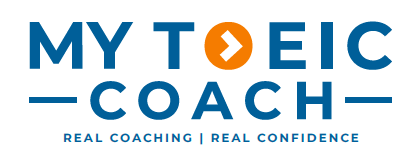TOEIC Listening Part 2: Question–Response — Expert Guide
In this part of the test, there’s no photo, no printed text — just a voice asking something, and three possible replies. You get one chance to hear it. That’s why Part 2 can feel like a trap waiting to happen. The good news? With the right strategies, you can make it one of your highest-scoring sections.
🎯 What Part 2 Really Tests
In the Question–Response section, you hear a short question or statement followed by three answer choices (A, B, C).
Your job: choose the response that makes sense in logic, tone, and natural English.
No text in the booklet — it’s all audio, played once.
Prompts can be questions or comments.
Correct answers are often subtle, not the “obvious-sounding” one.
⚠️ Common Challenges for Test Takers
Similar-sounding words: A distractor repeats a sound from the question but is unrelated.
Illogical answers: Grammatically fine, but wrong in meaning.
Echo traps: Copy a word from the prompt without answering it.
Unfamiliar phrases: Idioms, casual reductions (“gonna,” “lemme”) can cause hesitation.
Tricky WH- questions: “Where,” “When,” “Which,” “How” — especially when the clue is in prepositions or time.
Statement prompts: Require a reaction, not a literal answer.
🛠️ Step-by-Step Strategy
Listen for intent — is it asking for action, information, or agreement?
Predict before you hear the choices — answer it in your head first.
Eliminate the wrong ones fast — mismatched tense, off-topic, or socially odd.
Match tone — formal with formal, casual with casual.
Prioritise logic over keywords — the best choice may share no words with the question.
Avoid echo traps — repeated words ≠ correct answer.
Commit and move on — hesitation costs you later.
🧠 Test Tips & Common Traps
Correct answers often avoid repeating the question’s key words.
Social awkwardness = usually wrong.
Totally unrelated options are there to distract — skip them fast.
If the question implies action, a plain yes/no is often incorrect.
Learn stock phrases: “Let me check,” “I’m not sure yet,” “It’s on the second floor.”
Pay attention to polite request forms (“Could you,” “Would you mind”) — they require a polite, indirect reply.
📌 Quick Example
Q: “When does the next train leave?”
❌ A: “Yes, I like trains.” (echo trap)
❌ B: “In the ticket office.” (wrong information type)
✅ C: “In about 10 minutes.” (logical, direct answer)
Final Word
Part 2 rewards quick thinking and clear listening. The more you practise recognising tone, intent, and natural English rhythm, the less you’ll be fooled by traps.
For more strategies and resources to sharpen your TOEIC listening logic, visit the English Library Collection and start mastering Part 2 with confidence.

